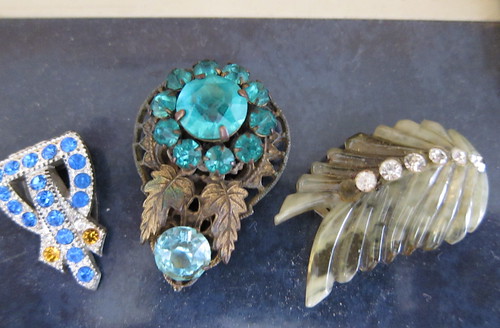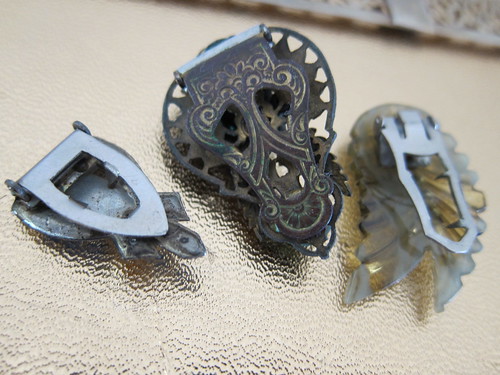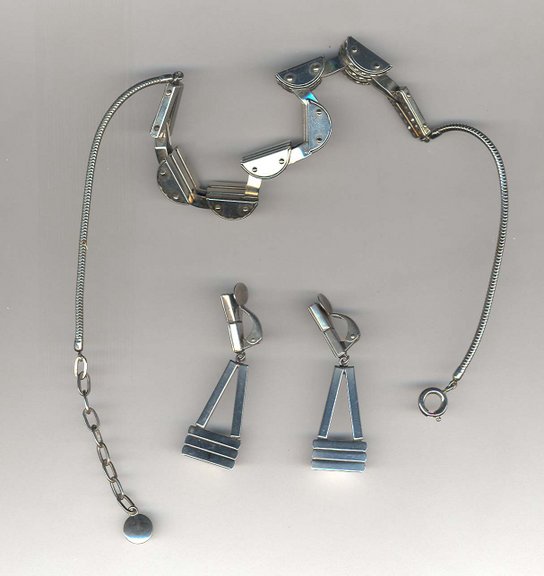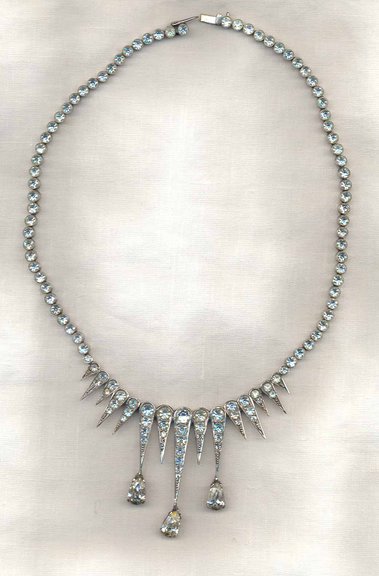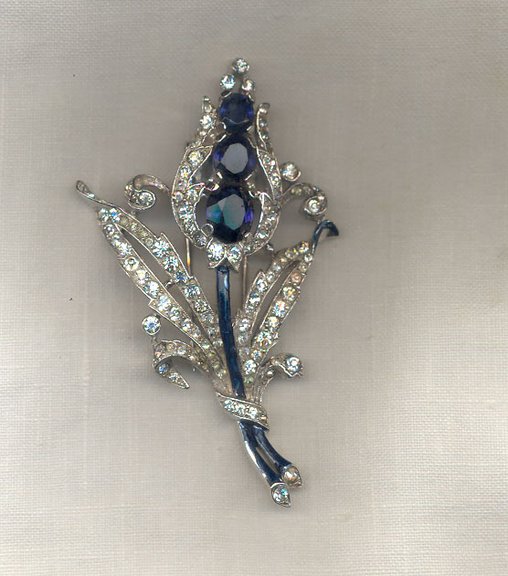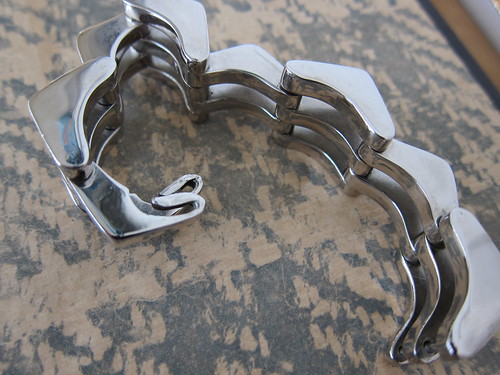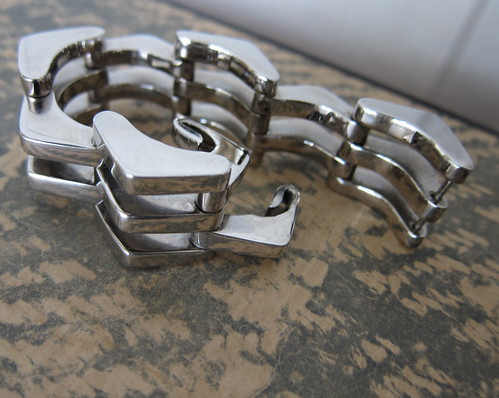The beginning of the 1930's was a time when most people were feeling the effects of the Great Depression. One of the most important pieces of jewelry in a woman's wardrobe in the 1930's was the Dress Clip. Worn singularly but more often in pairs, dress clips served to change the look of a garment by changing the neckline. Dress clips were first used in the 1920's. When they were worn in pairs they were identical although large singular clips were worn both in the front and at the back!
Films offered an escape from the hardships of daily life, and had a great influence on fashion and jewelry. The 1930's are often called the "Glamour Years."
Dress Clips:
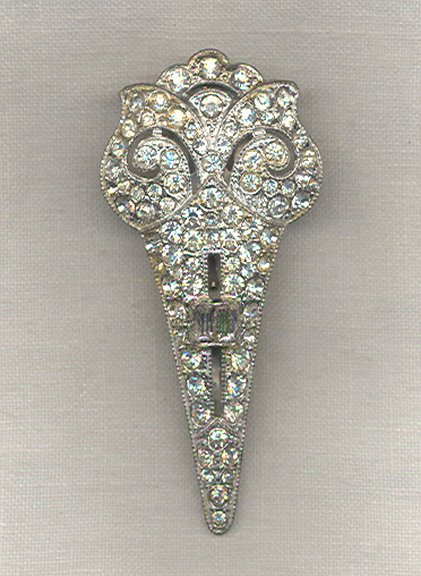
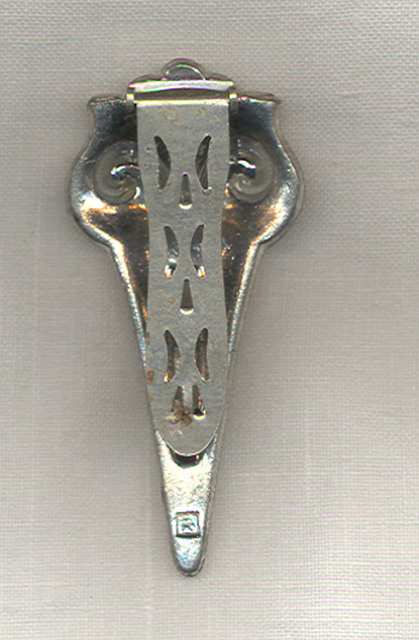
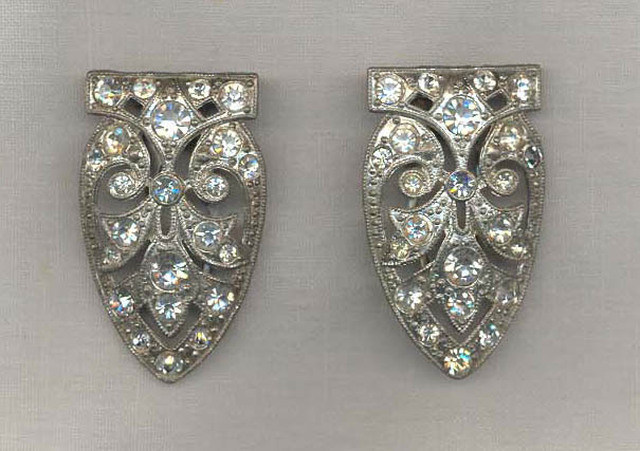
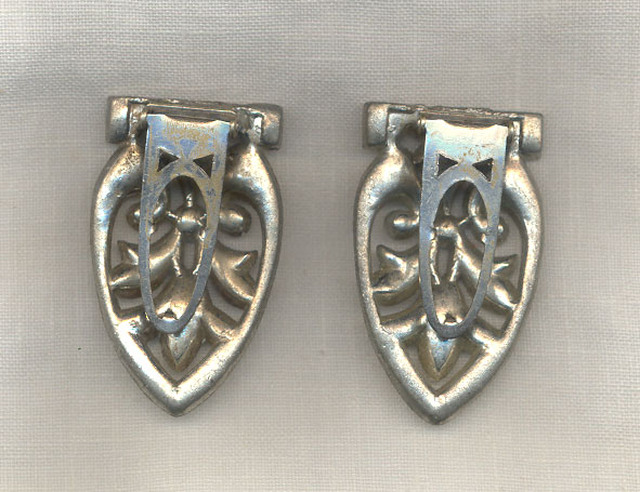
Dress clips were made at various prices and from many different materials. Women who could not afford new dresses might be able to save to buy a pair of dress clips at the 5 and Dime.
Here are some examples made of potmetal with rhinestones and crystal stones, rhinestones and "shoe buttons," celluloid, beads with rhinestone rhondelles, brass,etc.
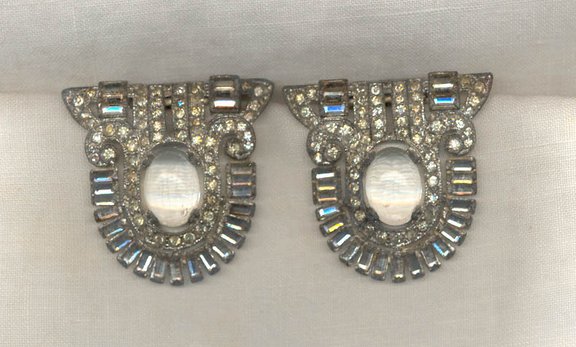
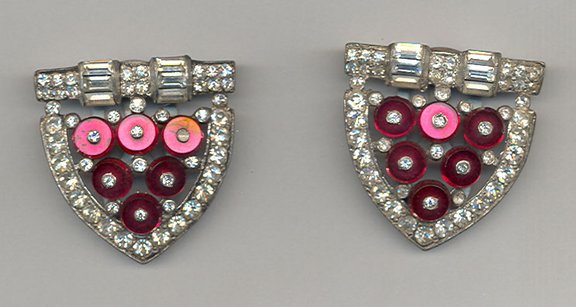

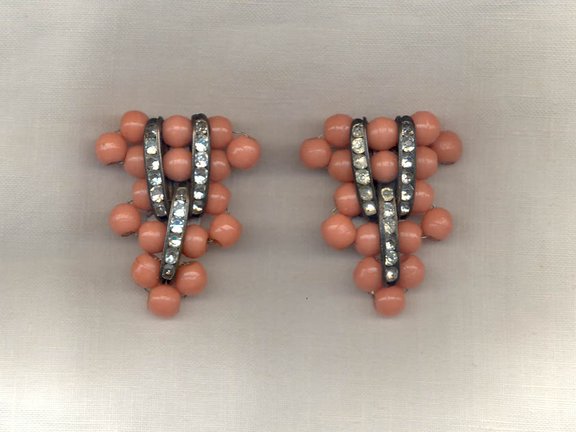
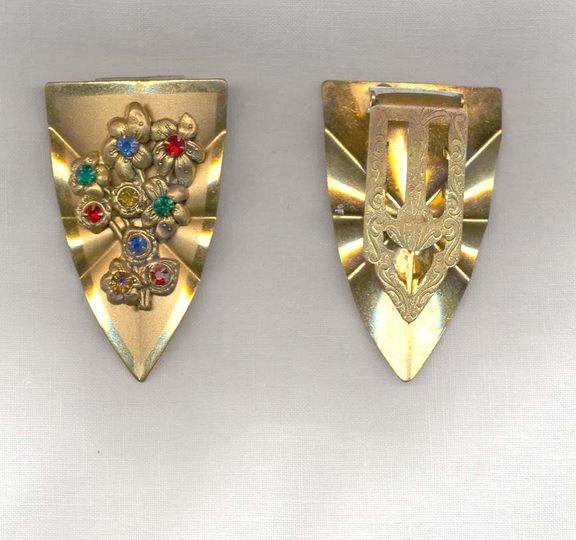
Some Bakelite examples:
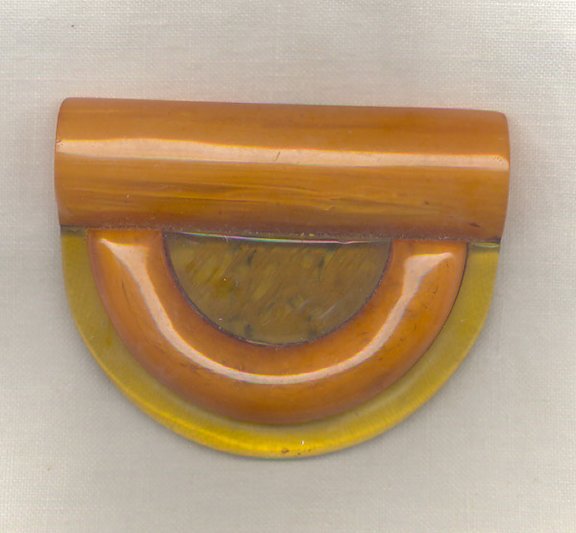
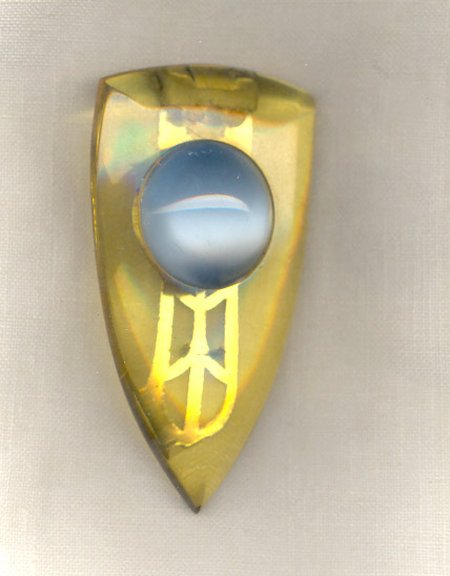
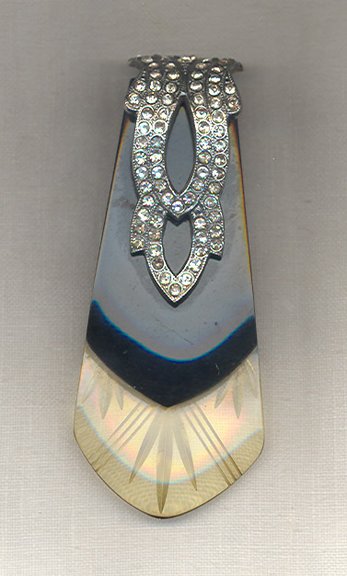
And a pair of dress clips set in pewter colored metal set with simulated moonstones - with matching screwback earrings:
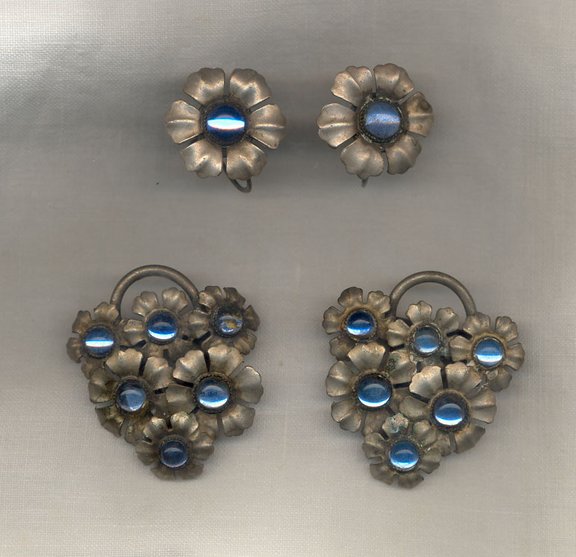
Here's a WMCA (White Metal Caster's Association) dress clip:
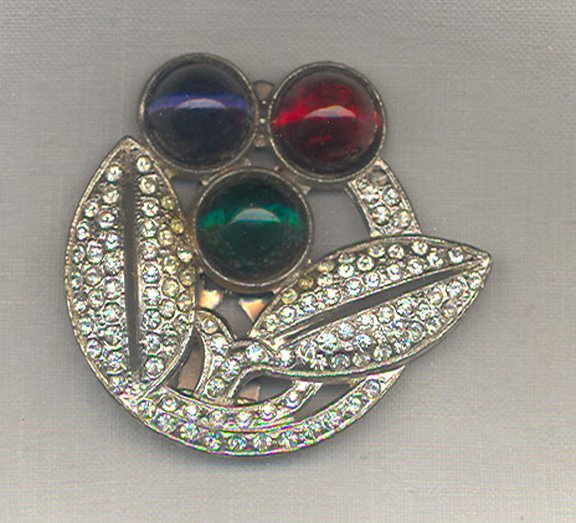
Some larger clips - meant to be worn alone - with fabric from the dress peaking through! The V-shaped one is adjustable -so it can be worn at a narrow or plunging neckline.
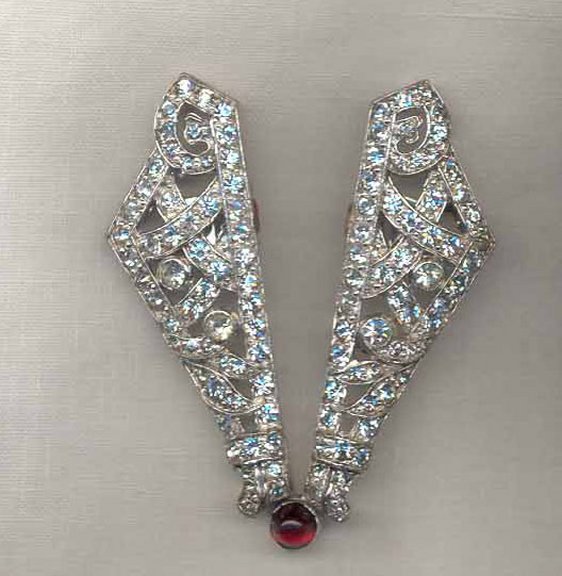
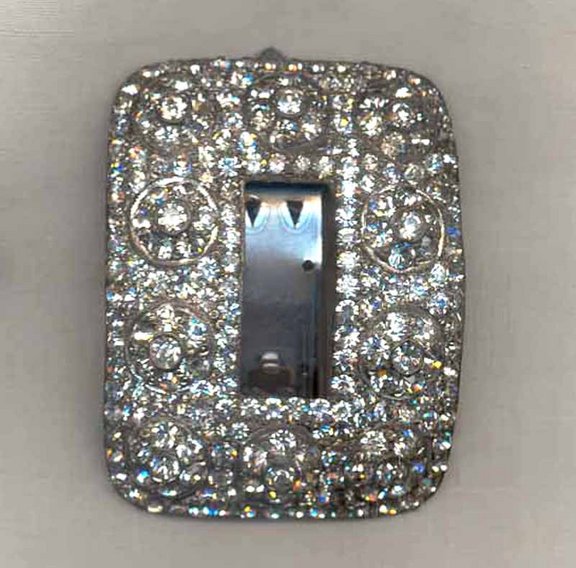
During the 1930's "high end" costume jewelry was rhodium plated. Here are two examples:

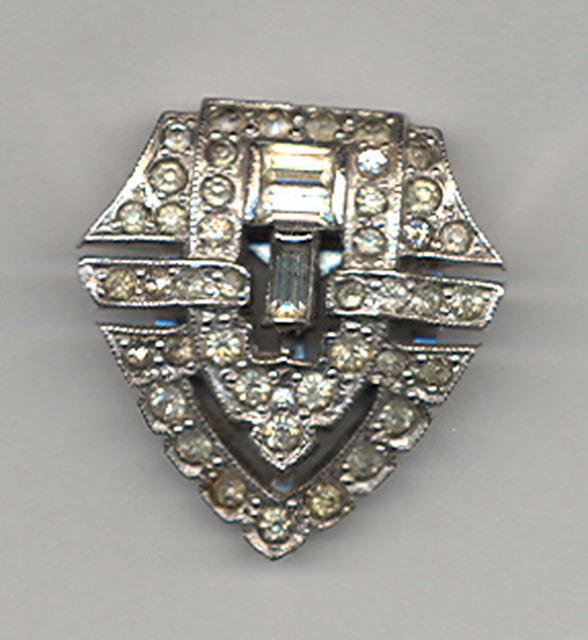
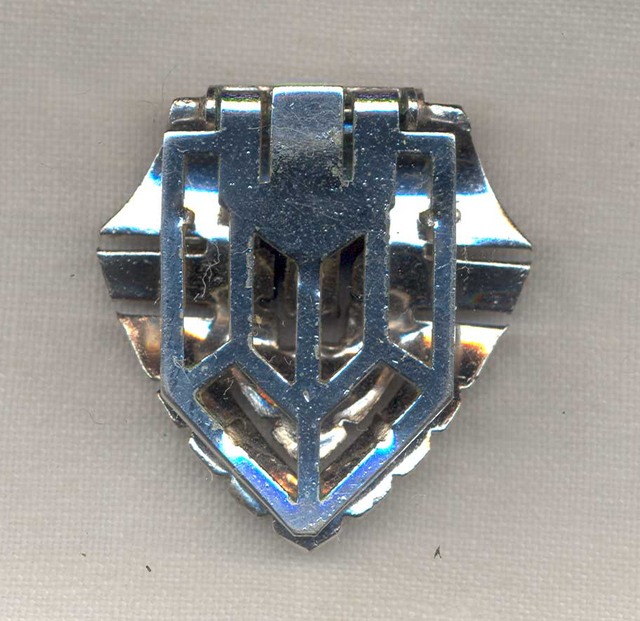
Jewelry in the early 1930's was quite similar to jewelry from the preceding decade.
Here's a C. 1930's ad from Aspreys:
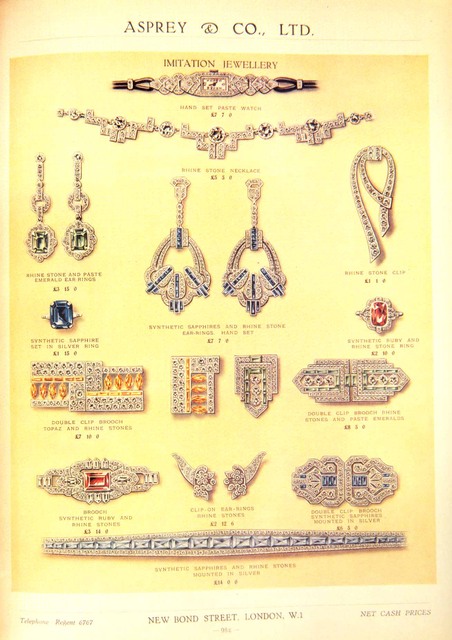
A very important invention - first used in fine jewelry is the double clip or convertible brooch clip. The Coro version, known as Duette was designed by a French fine jeweler, Gaston Candas in 1931. Coro purchased the rights to this patent. Many companies had their own versions. Coro had "Duettes" - Trifari - "Clipmates" and there were other patents for other mechanisms. The convertible brooch clip allowed women a lot of flexibility with one piece of jewelry!
Here are two examples:
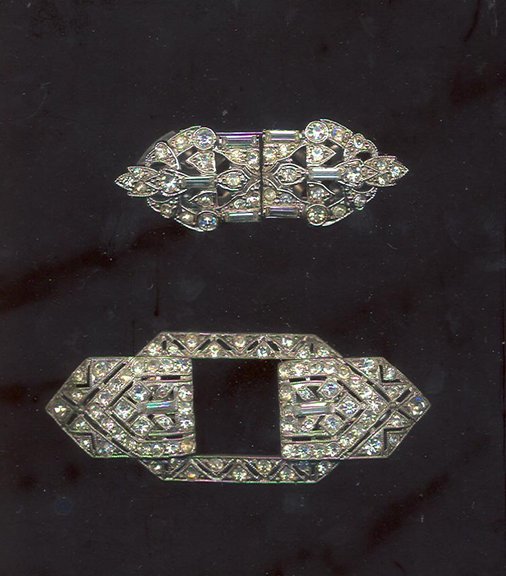
This is the back of the top one:
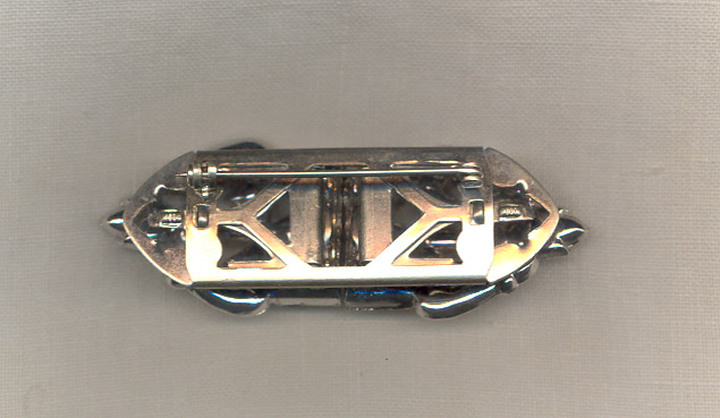
This example is a late '30's Coro Quivering Camellia "Duette" designed by Gene Verrecchia, who was the head designer at Coro for 30 years. It is shown with a pair of late '30's- '40's earrings. We'll be talking about earrings again in a little while so please look at the backs of the earrings, too.
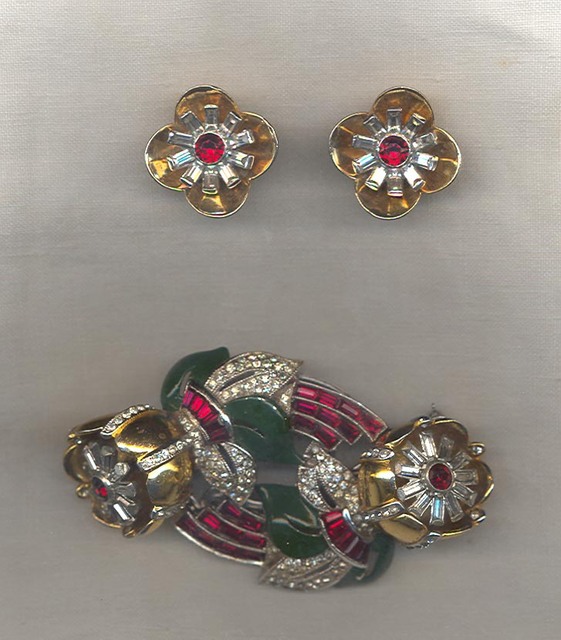
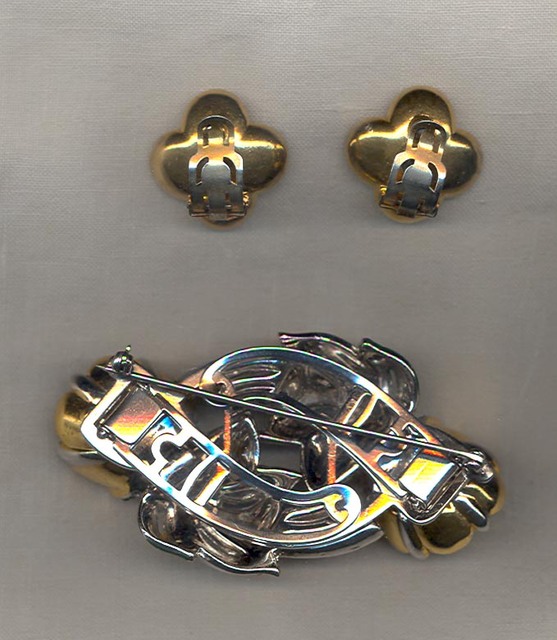

Here are a few '30's bracelets. The first is marked 935 which is the German mark for Sterling:

Two KTF rhodium plated bracelets:
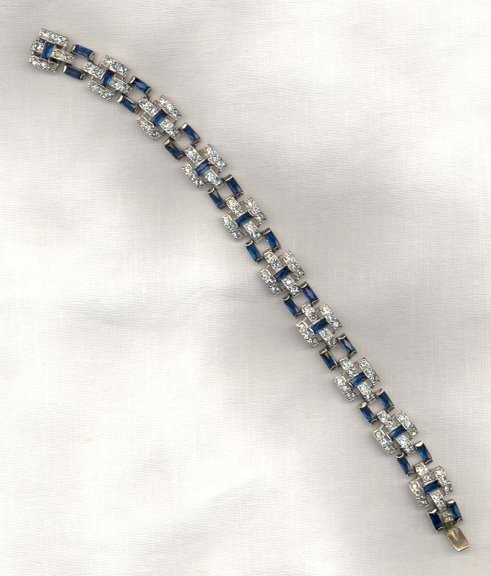
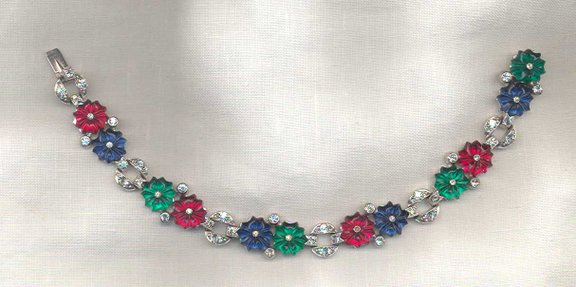
and a Pot Metal plastic version - probably sold at the 5 and Dime store:
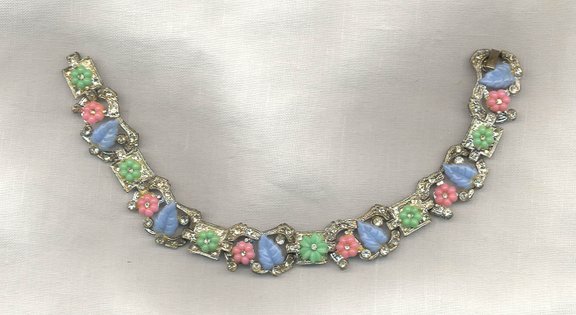
Not all jewelry was "dressy" - some was streamlined and influenced by the architecture and machines of the day. We saw these earrings in Part II:
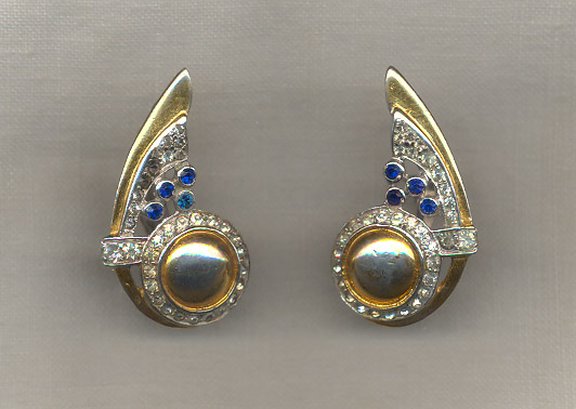
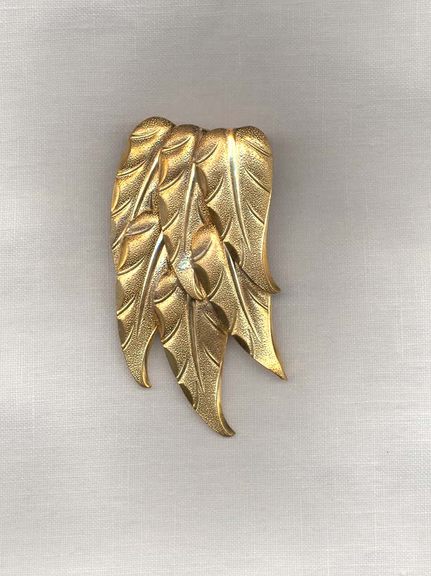
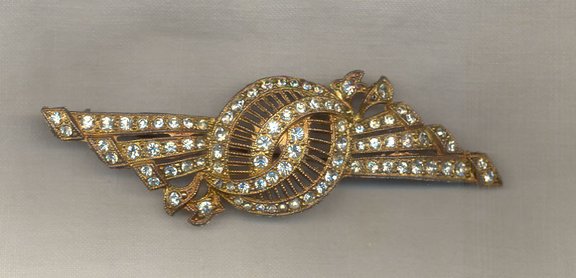
Celluloid and Rhinestone Pin:
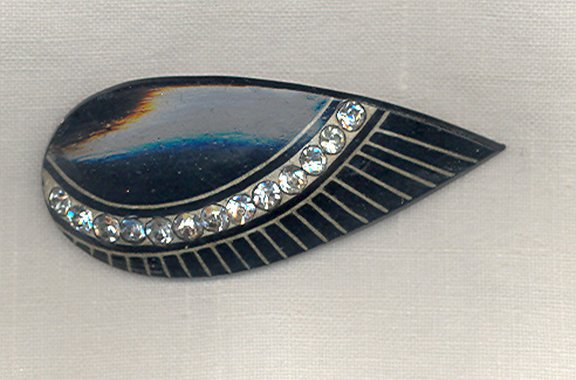
This necklace is Czech - made of Galalith and Chrome:

I wear it with these Bakelite and Chrome earrings:
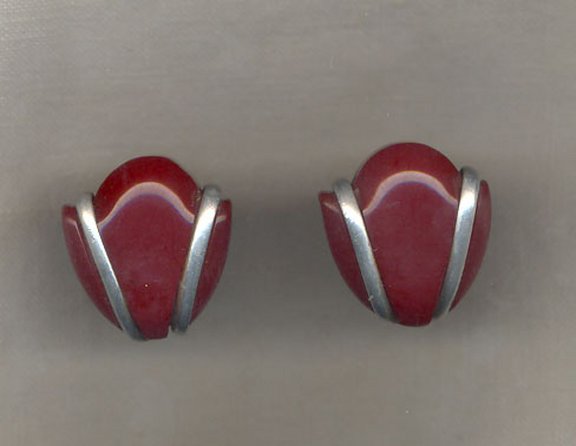
Galalith is a plastic that looks very similar to Bakelite but has different chemical properties. It does not "test" the same way and was used primarily in Europe.
This is brass:
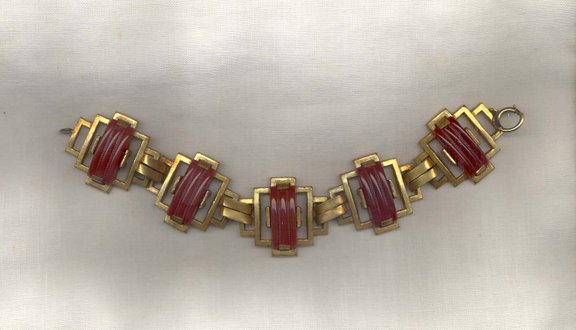
This piece has many characteristics of Pre-War German jewelry, but I have been unable to find out anything about the company. It is nickel plated - marked DoSo and Germany.
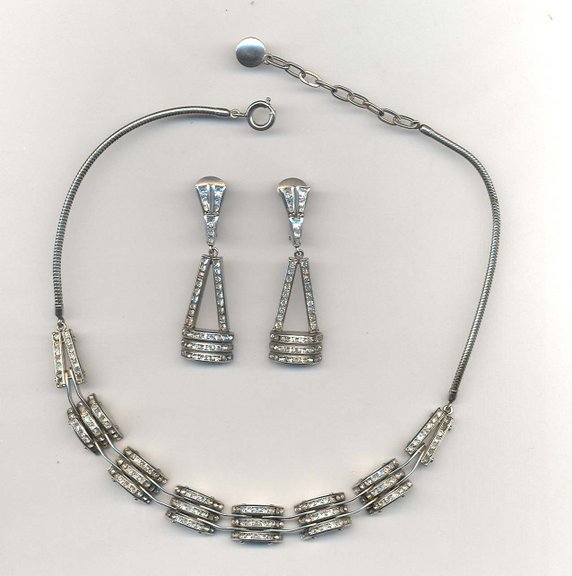
Fashions in the early '30's were very different from the '20's. The boyish cut was gone. Hemlines were far longer, the bias cut accented the curves of a woman's body and as mentioned earlier, films had a huge influence on how women dressed.
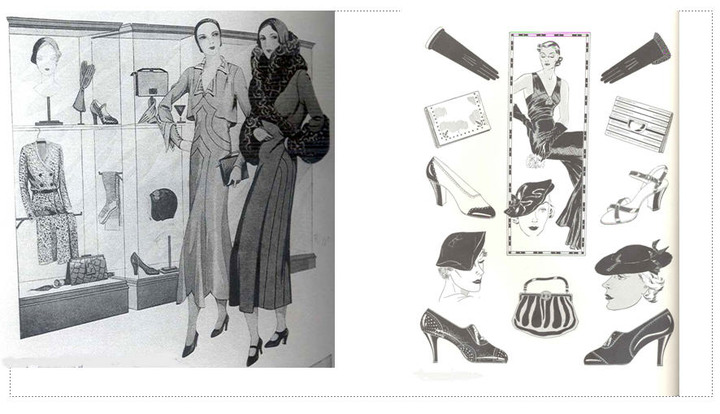
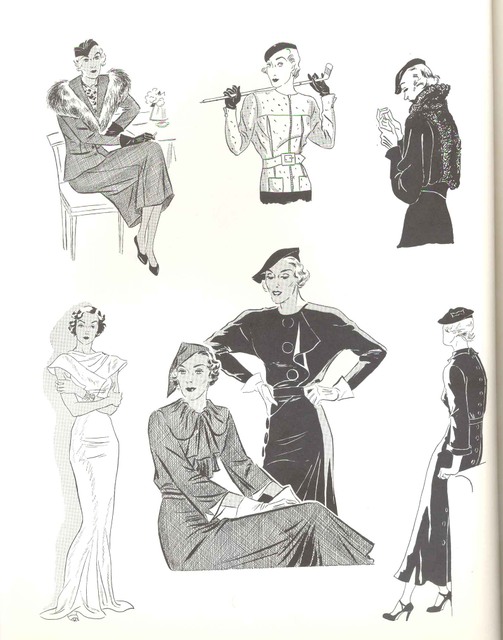
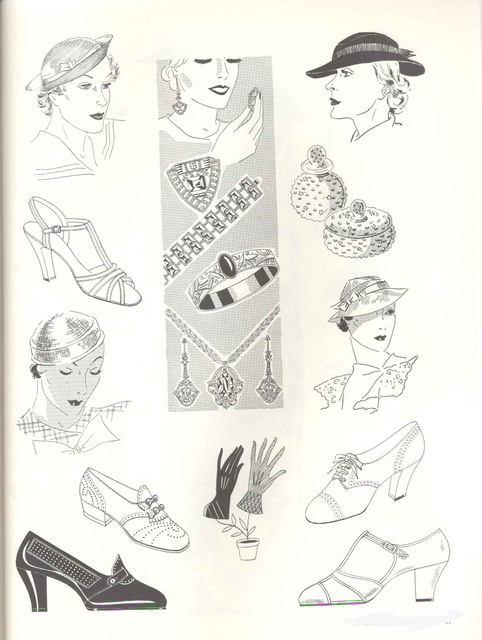
This is an early '30's Pouchoir - a hand colored French fashion drawing:
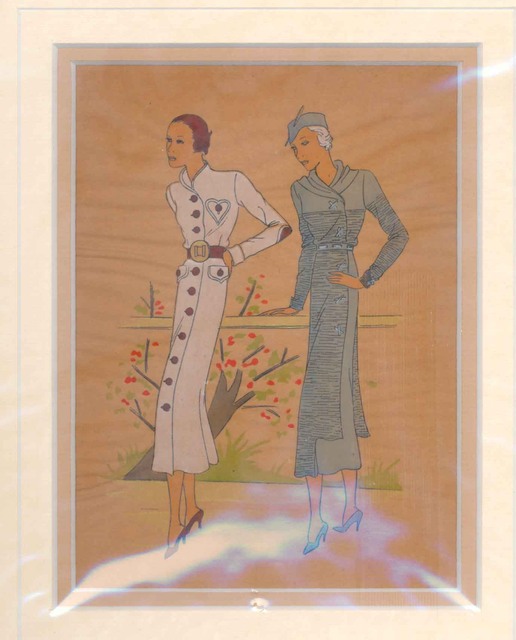
Some 1930's jewelry was whimsical and fun like this celluloid and Bakelite necklace:
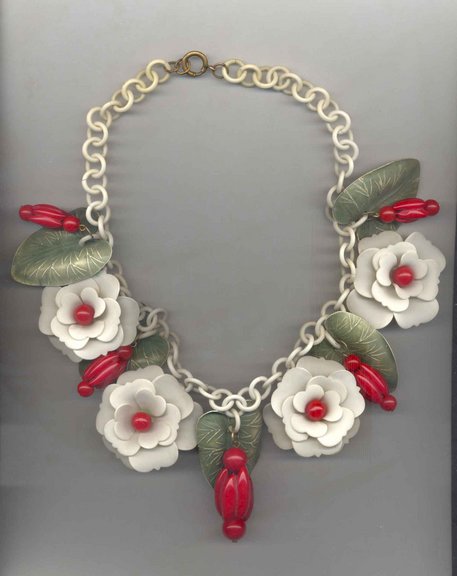
It's easy to picture Dorothy Lamour wearing this!
Another example of "fun" jewelry is the plastic pin set in aluminum that I showed in Part I:
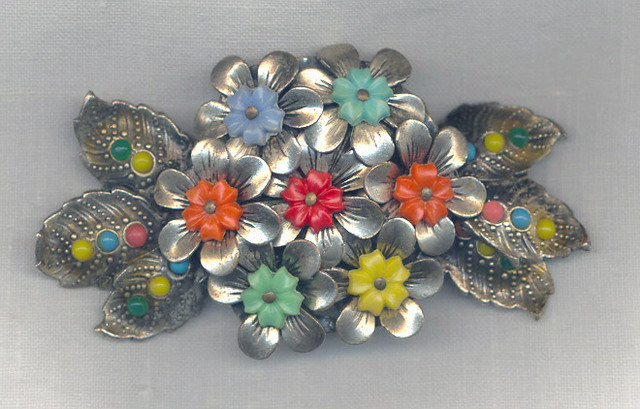
Plastic jewelry was a big part of the 1930's. Here's a Bakelite and Celluloid dangle brooch:
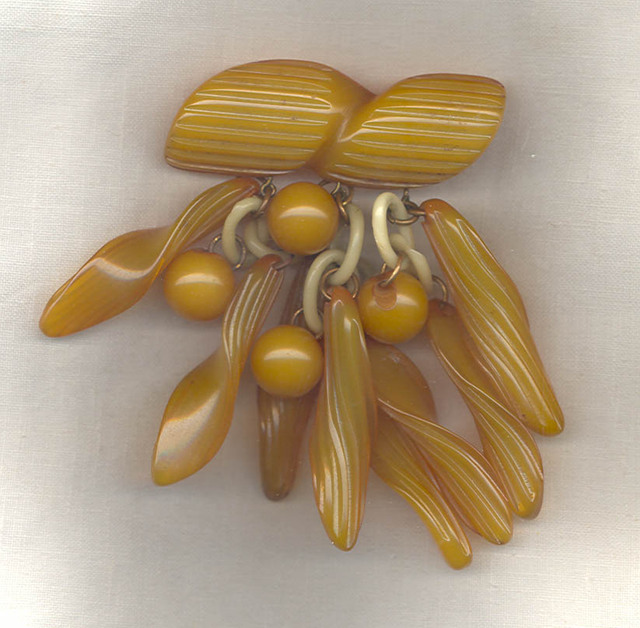
The "Scotty" was a very popular motif in jewelry because of President Roosevelt's dog Fala. Here are a few celluloid Scotties who exemplfy "whimsy."
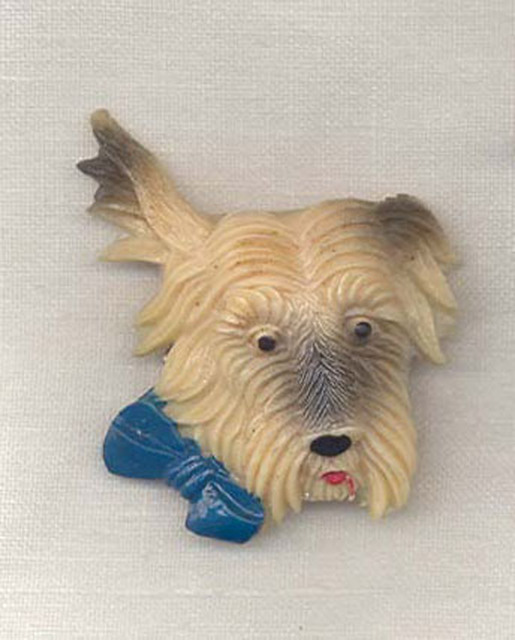
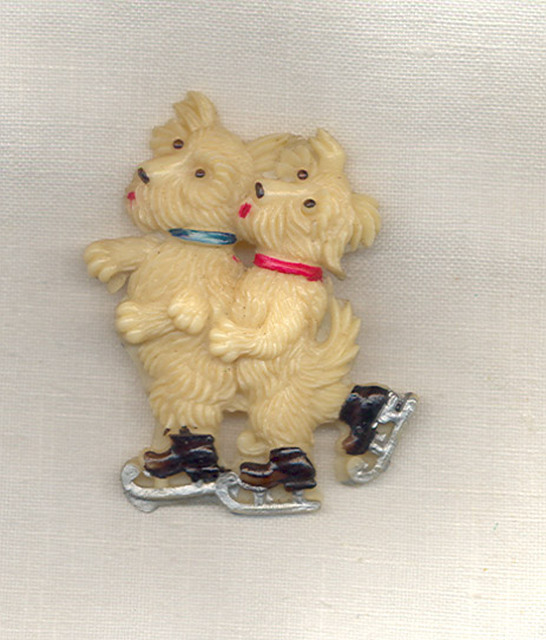
Earrings became very fashionable in the 1930’s and were a very important part of a woman's wardrobe. The patent for costume clip findings was assigned in 1934 in the U.S.
Here is a copy of the patent along with a pair of earrings with the early findings. Remember that findings are used for years so it does not mean that the red rhinestone earrings date to 1934, but you know they are no earlier than that date.
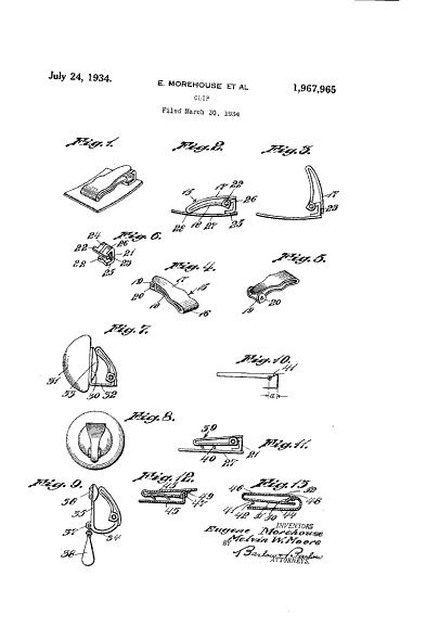
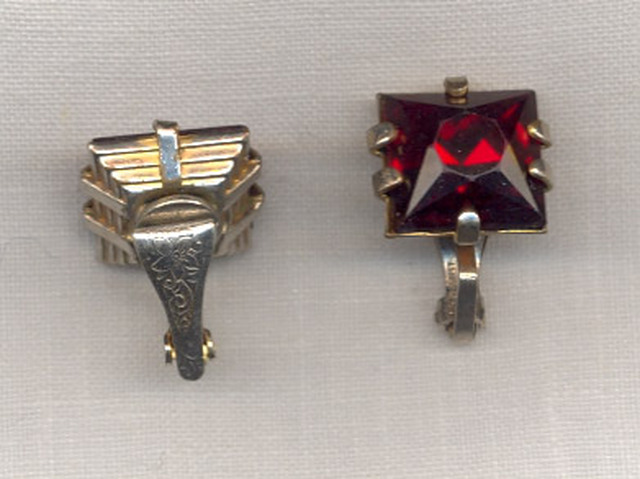
Here's a pair of early clip earrings that are from 1934:
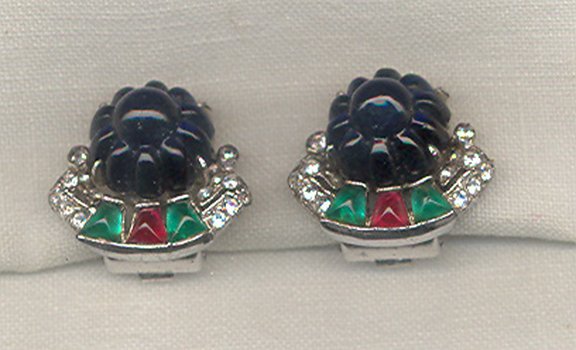
This pair of Art Deco style earrings are screw-backs and very unusual!
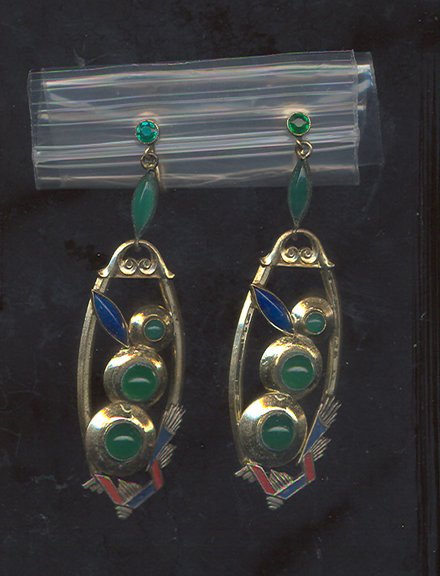
These are very long and dangly '30's earrings - hard to photograph:
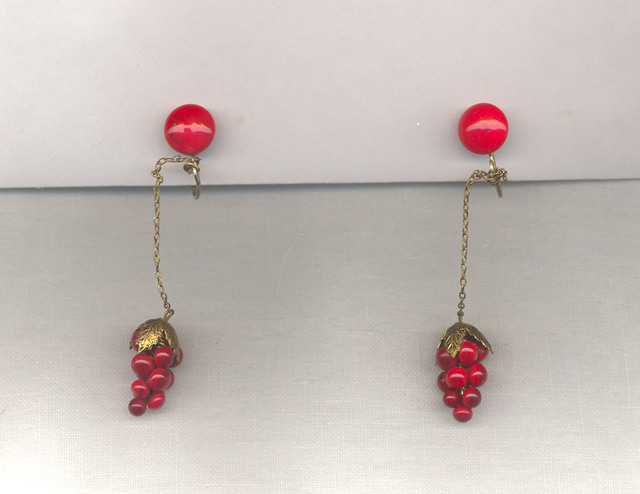
Screw-back earrings were first used in the mid-1890's and were still in use in the very early 1960's. Some early clip findings were used for decades, too. When you try to "date" a piece take the over-all design, the materials and the findings into consideration.
Here are some "early" earring clip earrings and two style of Trifari clip backs, used in the '30's and '40's:
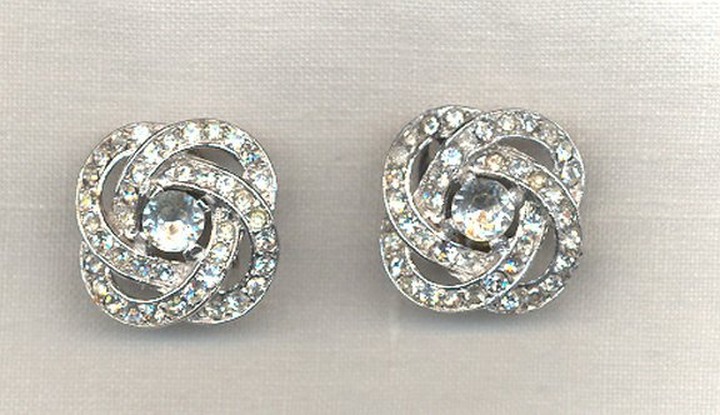
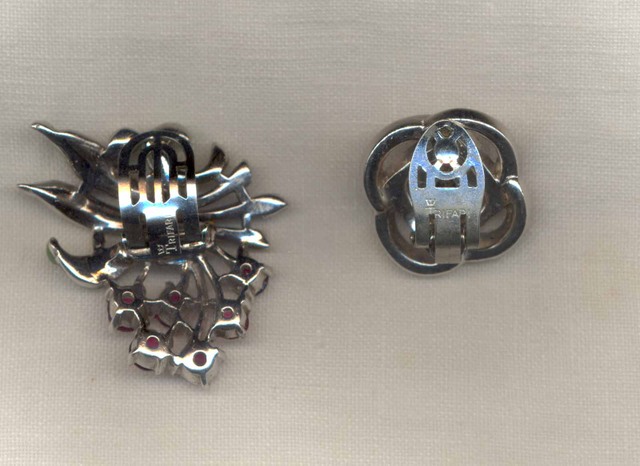
Later in the decade, earrings became larger and assumed the shape of flowers and clusters of leaves. Scroll back and look at the back of the earrings shown above with the Coro duette.
In Part IV we will talk about the Retro Period and the 1940's.
Films offered an escape from the hardships of daily life, and had a great influence on fashion and jewelry. The 1930's are often called the "Glamour Years."
Dress Clips:




Dress clips were made at various prices and from many different materials. Women who could not afford new dresses might be able to save to buy a pair of dress clips at the 5 and Dime.
Here are some examples made of potmetal with rhinestones and crystal stones, rhinestones and "shoe buttons," celluloid, beads with rhinestone rhondelles, brass,etc.





Some Bakelite examples:



And a pair of dress clips set in pewter colored metal set with simulated moonstones - with matching screwback earrings:

Here's a WMCA (White Metal Caster's Association) dress clip:

Some larger clips - meant to be worn alone - with fabric from the dress peaking through! The V-shaped one is adjustable -so it can be worn at a narrow or plunging neckline.


During the 1930's "high end" costume jewelry was rhodium plated. Here are two examples:



Jewelry in the early 1930's was quite similar to jewelry from the preceding decade.
Here's a C. 1930's ad from Aspreys:

A very important invention - first used in fine jewelry is the double clip or convertible brooch clip. The Coro version, known as Duette was designed by a French fine jeweler, Gaston Candas in 1931. Coro purchased the rights to this patent. Many companies had their own versions. Coro had "Duettes" - Trifari - "Clipmates" and there were other patents for other mechanisms. The convertible brooch clip allowed women a lot of flexibility with one piece of jewelry!
Here are two examples:

This is the back of the top one:

This example is a late '30's Coro Quivering Camellia "Duette" designed by Gene Verrecchia, who was the head designer at Coro for 30 years. It is shown with a pair of late '30's- '40's earrings. We'll be talking about earrings again in a little while so please look at the backs of the earrings, too.



Here are a few '30's bracelets. The first is marked 935 which is the German mark for Sterling:

Two KTF rhodium plated bracelets:


and a Pot Metal plastic version - probably sold at the 5 and Dime store:

Not all jewelry was "dressy" - some was streamlined and influenced by the architecture and machines of the day. We saw these earrings in Part II:



Celluloid and Rhinestone Pin:

This necklace is Czech - made of Galalith and Chrome:

I wear it with these Bakelite and Chrome earrings:

Galalith is a plastic that looks very similar to Bakelite but has different chemical properties. It does not "test" the same way and was used primarily in Europe.
This is brass:

This piece has many characteristics of Pre-War German jewelry, but I have been unable to find out anything about the company. It is nickel plated - marked DoSo and Germany.

Fashions in the early '30's were very different from the '20's. The boyish cut was gone. Hemlines were far longer, the bias cut accented the curves of a woman's body and as mentioned earlier, films had a huge influence on how women dressed.



This is an early '30's Pouchoir - a hand colored French fashion drawing:

Some 1930's jewelry was whimsical and fun like this celluloid and Bakelite necklace:

It's easy to picture Dorothy Lamour wearing this!
Another example of "fun" jewelry is the plastic pin set in aluminum that I showed in Part I:

Plastic jewelry was a big part of the 1930's. Here's a Bakelite and Celluloid dangle brooch:

The "Scotty" was a very popular motif in jewelry because of President Roosevelt's dog Fala. Here are a few celluloid Scotties who exemplfy "whimsy."


Earrings became very fashionable in the 1930’s and were a very important part of a woman's wardrobe. The patent for costume clip findings was assigned in 1934 in the U.S.
Here is a copy of the patent along with a pair of earrings with the early findings. Remember that findings are used for years so it does not mean that the red rhinestone earrings date to 1934, but you know they are no earlier than that date.


Here's a pair of early clip earrings that are from 1934:

This pair of Art Deco style earrings are screw-backs and very unusual!

These are very long and dangly '30's earrings - hard to photograph:

Screw-back earrings were first used in the mid-1890's and were still in use in the very early 1960's. Some early clip findings were used for decades, too. When you try to "date" a piece take the over-all design, the materials and the findings into consideration.
Here are some "early" earring clip earrings and two style of Trifari clip backs, used in the '30's and '40's:


Later in the decade, earrings became larger and assumed the shape of flowers and clusters of leaves. Scroll back and look at the back of the earrings shown above with the Coro duette.
In Part IV we will talk about the Retro Period and the 1940's.
